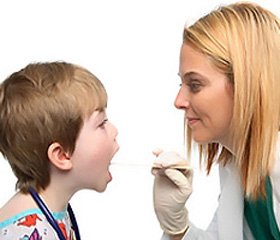Журнал «Здоровье ребенка» 4 (47) 2013
Вернуться к номеру
Features of extraesophageal manifestations of gastroesophageal reflux disease in children
Авторы: Kryuchko T.A., Nesinа I.M., High State Educational Institution "Ukrainian Medical Stomatological Academy", Poltava, Ukraine
Рубрики: Педиатрия/Неонатология
Разделы: Клинические исследования
Версия для печати
gastroesophageal reflux disease, children, diagnosis, and extraesophageal symptoms.
Permanent interest to the symptoms of gastroesophageal reflux disease (GERD) is caused primarily by the fact that, despite the long history of research, the latest advanced achievements of medical science in determining etiopathogenetical factors remains as not solved problem in modern medicine. The large number of erased and atypical clinical forms, the lack of generally accepted approaches to the diagnosis of GERD in children of preschool and primary school age, complicates diagnosis of gastroezofagal reflux disease, making it too late and leads to the appearance and progression of complications. Diagnosis of GERD in older children remains still complicated because of the existence of many outsideesophageal symptoms of the disease, besides the classic version course GERD.
We have observed 69 children aged 7-15 years who were treated because of chronic gastroduodenal pathology. Analyzing the data of children endoscopy with GERD, we found that reflux esophagitis (RE) was detected in 42 patients and chronic gastroduodenitis (CGD) was found in 27children. It formed the comparison group. During the analysis of typical symptoms we did not get the correlation between the severity of reflux esophagitis in children and the frequency and severity of heartburn and severity of dyspeptic symptoms in children with RE as belching, heartburn, sour taste in the mouth, heaviness in the epigastrium, feeling of rapid saturation depended on age.
In the study of the oral mucosa was noted that swelling of the tongue, teeth marks, "geographic" tongue occurred significantly more often to children with RE than to children with CGD. The frequency of carious lesions of teeth hard tissues of different severity in children with PE was also significantly higher than in children with CGD. The frequency of systematical hypoplasia system was observed 3 times more often in children with RE than in children with CGD. It was found a direct correlation between age and frequency of lesions of the oral cavity as swelling of tongue, teeth marks on tongue, cavities of varying severity, catarrhal gingivitis. The pathology of the upper respiratory tract was also significantly higher in children diagnosed with PE than in children with CGD. During the process of fahinhoskopiyi with children with PE significantly more often occured hyperemia and hypertrophy of the tonsils I-II degree and hyperemia of the congestion palate.
Our study on the calculation of diagnostic sensitivity using IPP test showed that in the observed children it was amounted to 86% and diagnostic specificity - 60%. Predictive value of a positive result in our study was 90%, and the predictive value of a negative result was only 38%.
Thus, the typical esophageal symptoms with the greatest frequency (94.2%) are aged 14-15 years and there is no relationship between the degree of damage the esophagus and heartburn. Children with reflux esophagitis and frequency of 92.9% suffer from various diseases of the mouth, with a frequency of 90.5% of upper respiratory tract disease, and 83.3% of their combination, while the frequency of dental and otorhinolaryngological manifestations correlate with the age of children and severity of reflux esophagitis. Children with reflux esophagitis are characterized by cardiac complaints and there is a tendency to decline in respiratory function which describes the excitation of obstructive type with more severe damage of the esophagus in children.

